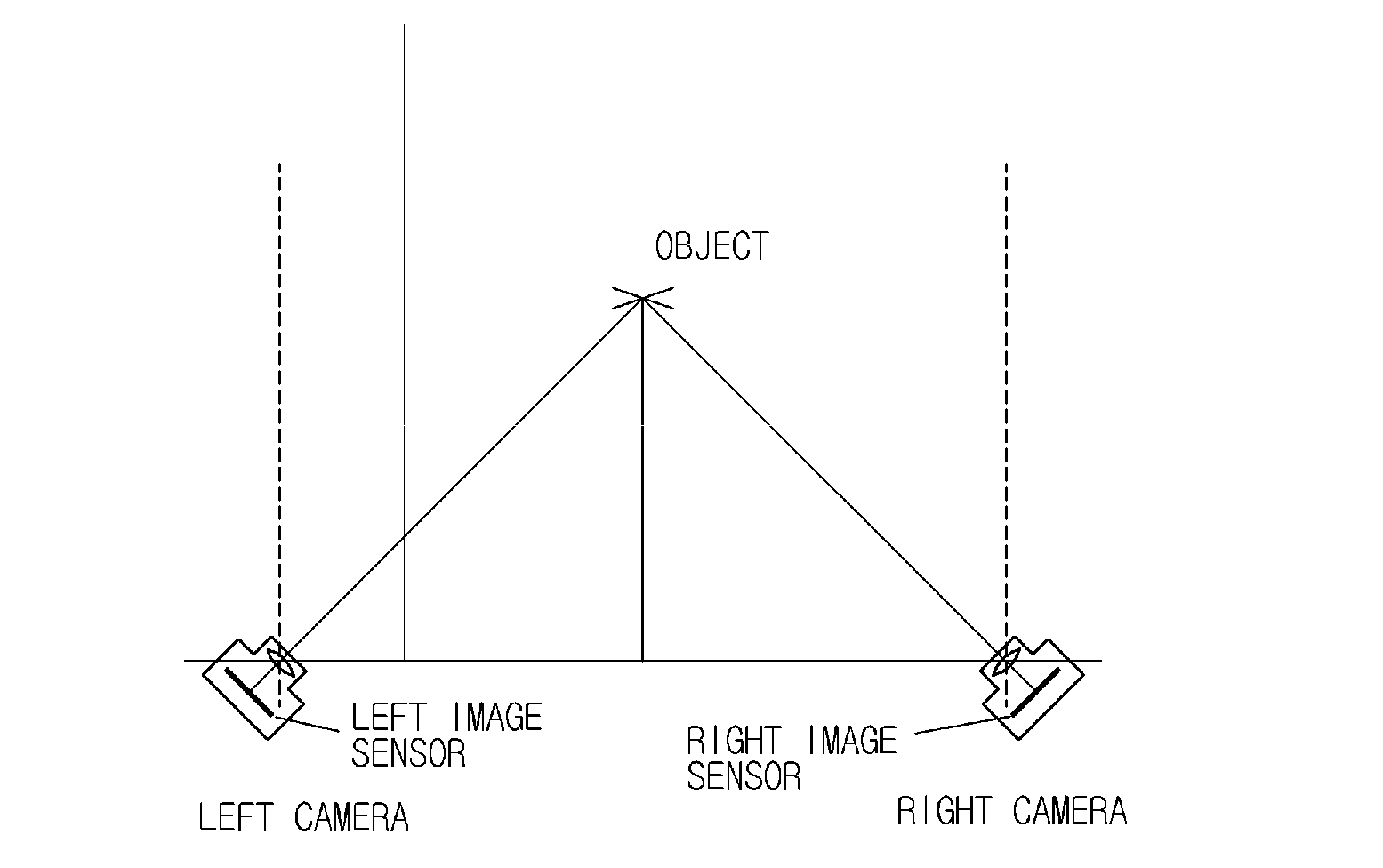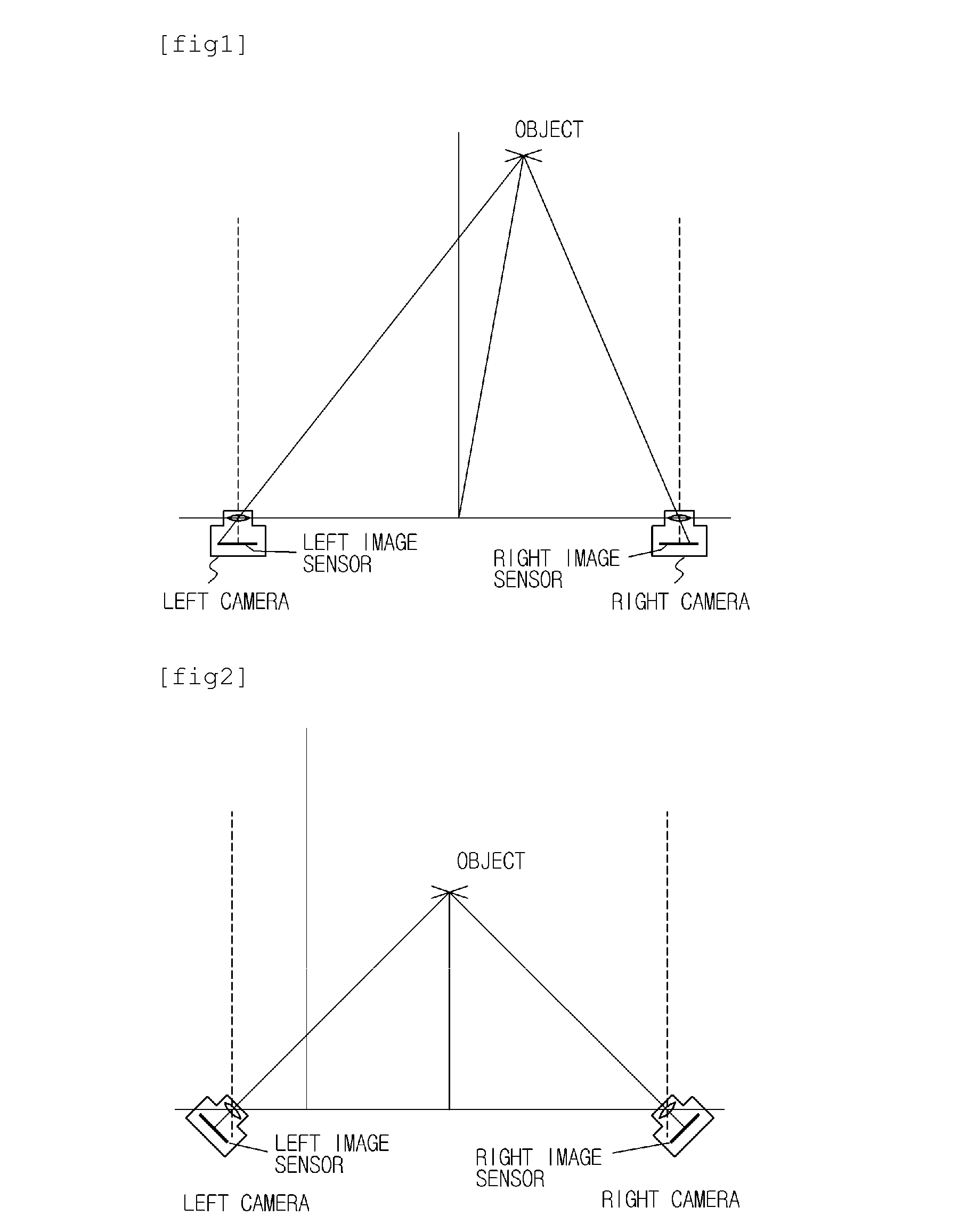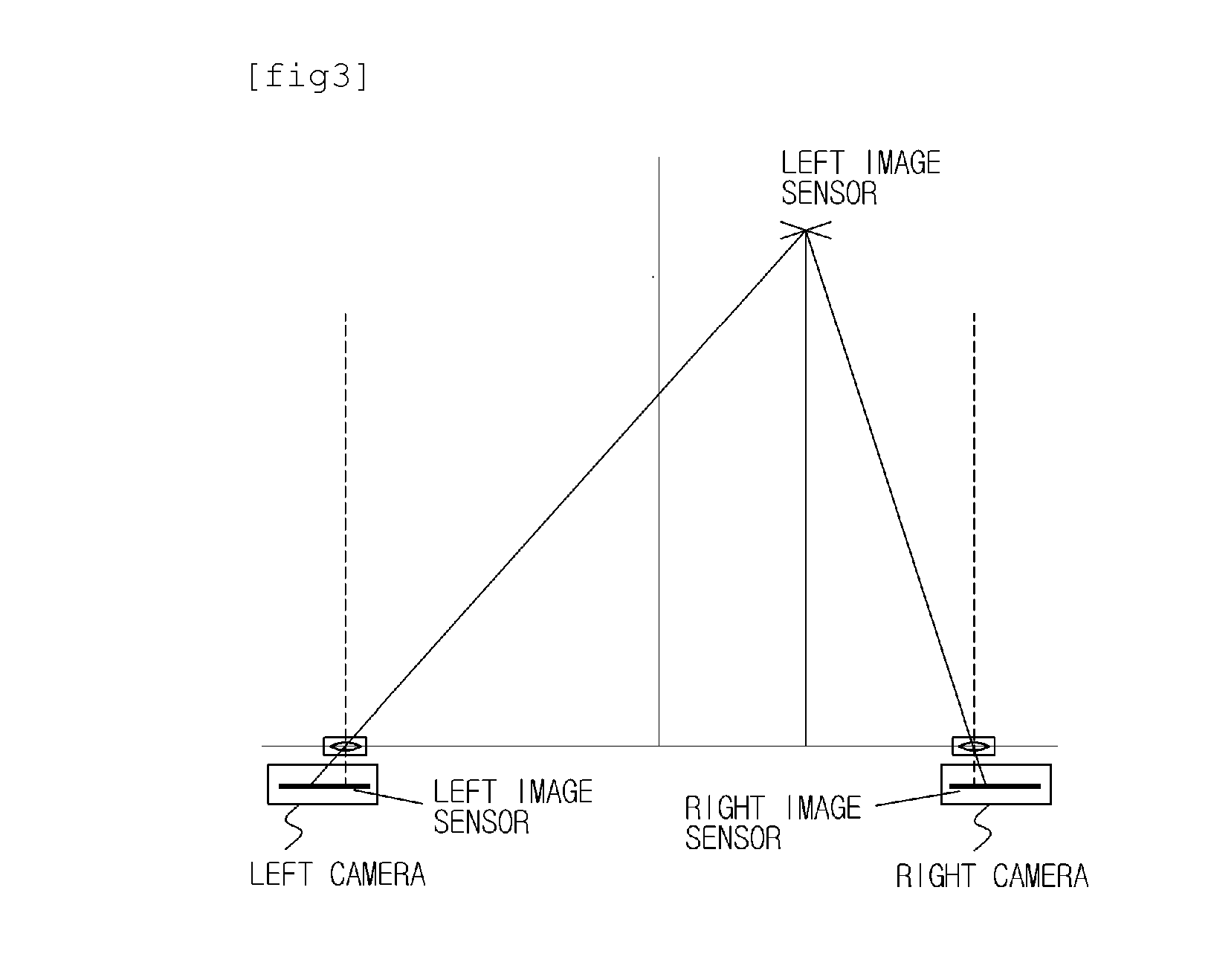Parallel axis stereoscopic camera
a stereoscopic camera and parallel axis technology, applied in the field of parallel axis stereoscopic cameras, can solve the problems of inability to adjust the disparity amount according, observer fatigue, and so on, and achieve the effects of preventing image loss, minimizing image distortion and time delay, and preventing image loss
- Summary
- Abstract
- Description
- Claims
- Application Information
AI Technical Summary
Benefits of technology
Problems solved by technology
Method used
Image
Examples
second embodiment
[0094]FIG. 12 is a block diagram of a parallel axis stereoscopic camera according to the present invention.
[0095]Referring to FIG. 12, a parallel axis stereoscopic camera according to a second embodiment of the present invention includes: a camera unit 10 which includes a left image sensor 12 and a right image sensor 14 each of which has a higher resolution than an output image, the camera unit outputting RGB data having the same resolution as the output image; a vergence controller 20 which performs an electronic control for eliminating a binocular disparity of an object by changing a read-out starting point in the horizontal direction, of at least one of the left and right image sensors 12 and 14; a stereoscopic RGB data synthesizer 42 which synthesizes left RGB data outputted from the left image sensor 12 with right RGF data outputted from the right image sensor 14 to produce stereoscopic RGB data under the control of the vergence controller 20; and an image processor 32 which pr...
third embodiment
[0099]FIG. 13 is a block diagram of a parallel axis stereoscopic camera according to the present invention.
[0100]Referring to FIG. 13, a parallel axis stereoscopic camera according to a third embodiment of the present invention includes: a camera unit 10 which includes a left image sensor 12 and a right image sensor 14 each of which has a higher resolution than an output image, the camera unit outputting RGB data having the same resolution as the output image; a vergence controller 20 which performs an electronic control for eliminating a binocular disparity of an object by changing a read-out starting point in the horizontal direction, of at least one of the left and right image sensors 12 and 14; a stereoscopic image processor 33 which processes an image of left RGB data outputted from the left image sensor 12 to generate a left luminance / chrominance signal, processes an image of right RGB data outputted from the right image sensor 14 to generate a right luminance / chrominance sign...
fourth embodiment
[0103]FIG. 14 is a block diagram of a parallel axis stereoscopic camera according to the present invention.
[0104]Referring to FIG. 14, a parallel axis stereoscopic camera according to a fourth embodiment of the present invention includes: a camera unit 10 which includes a left image sensor 12 and a right image sensor 14 each of which has a higher resolution than an output image, the camera unit 10 outputting left luminance / chrominance signal and right luminance / chrominance signal having the same resolution as the output image; a vergence controller 20 which performs an electronic control for eliminating a binocular disparity of an object by changing a read-out starting point in the horizontal direction, of at least one of the left and right image sensors 12 and 14; and a stereoscopic image synthesizer 44 which synthesizes the left luminance / chrominance signal and the right luminance / chrominance signal to produce a stereoscopic image.
[0105]Compared with other embodiments, the fourth ...
PUM
 Login to View More
Login to View More Abstract
Description
Claims
Application Information
 Login to View More
Login to View More - R&D
- Intellectual Property
- Life Sciences
- Materials
- Tech Scout
- Unparalleled Data Quality
- Higher Quality Content
- 60% Fewer Hallucinations
Browse by: Latest US Patents, China's latest patents, Technical Efficacy Thesaurus, Application Domain, Technology Topic, Popular Technical Reports.
© 2025 PatSnap. All rights reserved.Legal|Privacy policy|Modern Slavery Act Transparency Statement|Sitemap|About US| Contact US: help@patsnap.com



